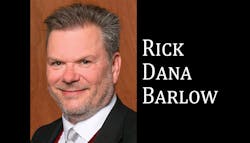During some years, assessing and evaluating all of the notable and noteworthy accomplishments of top-notch SPD teams nominated for Healthcare Purchasing News’ SPD Department of the Year award (now in its 27th year!) seems a lot like sword-wielding Harrison Ford crossing that cliff-spanning rope bridge in “Indiana Jones and the Temple of Doom.”
Unfortunately, the incessant screaming in my head isn’t emanating from Kate Capshaw.
While we truly value the annual SPD and Supply Chain Departments of the Year recognitions as an editorial highlight of the magazine and (hopefully) the multi-faceted industry it serves, we consistently approach each nomination received with fairness and balance, without bias or discrimination, focusing only on the myriad activities detailed in the content.
We read and respect every nomination submitted, cover to cover. Yes, it represents a lot of work, but we recognize that a nomination represents even more work for those writing and submitting them because that exercise falls outside their natural order of important tasks. We write and edit daily.
And there are SPD departments performing admirably and producing some stellar results that should make any C-suite proud because they extend their efforts beyond just their jobs. This year’s title-earner is no exception. As the nation’s first children’s hospital, it is the first children’s hospital to earn the title. Furthermore, another children’s hospital on the opposite coast earned honorable mention – making this a double dose of firsts for all.
Striking a balance, however, remains an ongoing struggle. We take conscientious care to avoid characteristic patterns, operational predictability, stereotypes and trends. Rest assured, we don’t look for a particular profile. Yes, we provide a structure for departments to share their experiences both good and bad (and what they learned from the latter and progressed from that point) from large and small organizations.
But despite any suspicions to the contrary, independent of the information format requests and the nomination structure itself, we favor no quintessential model as a “sure-fire winner.”
Some years may feature departments on the brink of failure that turned things around quickly, sort of like an “SPD Impossible” or “SPD Rescue” TV show. Others may promote departments demonstrating long, slow, steady growth and improvement. Still others may be overburdened teams juggling multiple projects to elicit both incremental and dynamic improvements.
Some departments may make do with what they have in a fixer-upper environment (think of those flip-flop home improvement shows) and succeed; others may showcase the latest techniques and technology in a “move-in ready” sterile processing palace of productivity.
Arguably, less than a majority of SPDs have access to deep fiscal pockets to finance necessary upgrades others may cast as lavish tools on a wish list. But digital prowess doesn’t necessarily overshadow analog ingenuity, particularly if you have a close-knit team of educated and certified professionals who understand their mission, recognize their importance and care about their performance as it impacts patient outcomes.
We’re mindful of the big-budgeted makeovers and turnarounds, but not to the point that they constitute or define a/the winning formula. Over the years, some SPD leaders, observers and pros privately have told me that if they enjoyed the resources and support that certain other facilities are afforded (with a nod toward those “winning” facilities), then they could be capable contenders.
Maybe, but not assuredly. Historically, both types have earned accolades and honors.
A thought HPN Managing Editor Valerie Dimond mentioned about departments having the budget to improve may be a leading factor in their success actually resonated with me – and should with many readers.
“Maybe that is the message people need to hear,” Dimond said. “Invest in your SPD people.”
Healthcare organizations don’t need to devote the lion’s share of investment necessarily in all the high-tech appliances, open footprint and stainless steel whatever. Investment can concentrate on the professionals themselves – expanding their knowledge and skills, harnessing their talents, motivating their camaraderie and confidence.
We should demand and do no less.
About the Author
Rick Dana Barlow
Senior Editor
Rick Dana Barlow is Senior Editor for Healthcare Purchasing News, an Endeavor Business Media publication. He can be reached at [email protected].

